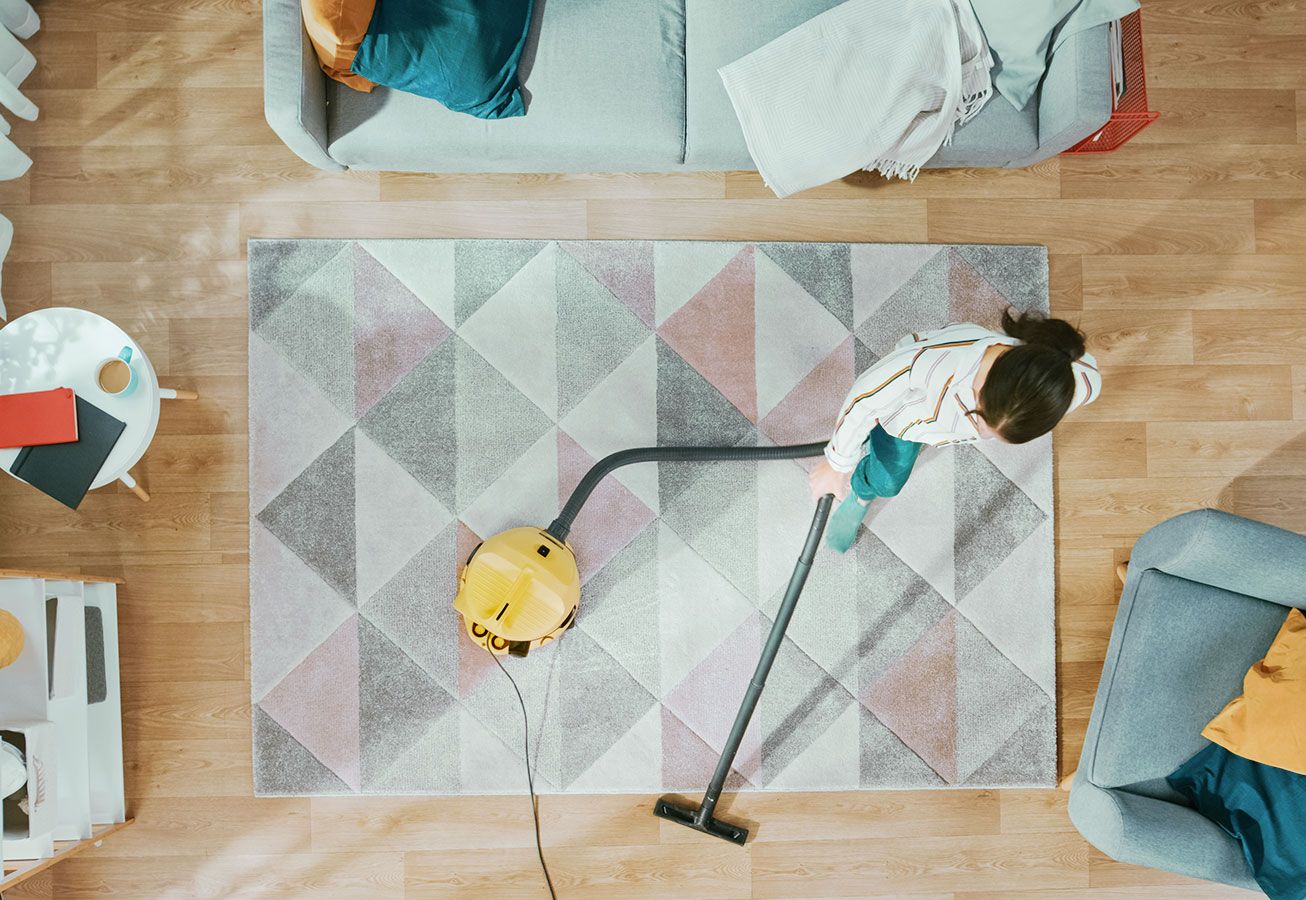Minimalism has become a popular practice in recent years. When you live as a minimalist, you strive to only use things that serve a purpose. It’s about living simply and having only what you need to go about your daily life. For instance, some people may start a no-spend challenge or only fill their home with items they absolutely need. Not only could you save money, but you can also save time on cleaning and organizing.
Practicing minimalism is an ongoing process. You’ll always find ways to improve and modify your minimalism. To start, evaluate what currently serves a purpose in your life and what may be superfluous. When you practice a minimalist mindset, you’re choosing to live a more focused life. You may start with cleaning up your budget and then move on to organizing your home. Taking the first steps to declutter your life is a big move, but you might need a game plan to make these habits stick.
Many of us may have too much stuff, and may even be spending too much on unnecessary purchases. Establishing a consistent and healthy budget should help you cut down on the things you don’t need and may even reduce your anxiety and stress. To keep track of your minimalist budget, download our app for easy accessibility. If you’re considering doing some decluttering this season, skip to our infographic or keep reading for in-depth tips on practicing a minimalist lifestyle.
Minimalist Lifestyle Starter Tips
When first starting out your journey, it’s important to start small. From changing your shopping habits to going strictly digital, there are lots of ways to switch up your routine. Here are our go-to tips for kickstarting your minimalism journey.
1. Shop Quality, Not Quantity
Minimalism doesn’t mean you never go shopping, it just means you’re more intentional with your purchases. Whether you’re in need of a new pair of running shoes or work pants, invest in quality pieces that will last you a long time. Even though a higher price tag may be less than ideal at the time, you’ll likely save money in the long run by cutting down on frequent purchases. Not to mention, you’ll cut down on waste — one garbage truck of clothes is discarded every second.
2. Digitize Movies and Books
If you’re a big reader or movie watcher, consider going digital with your collection. This will save space in your home and make sure you can always find what you want. Instead of having to go to the store for your next read, you could get it at your fingertips in a couple of clicks. If you like to physically feel the book pages every time you flip the page, consider checking out your local library. You can find all sorts of books at no charge.
3. Eliminate, Eliminate, Eliminate
One of the most important parts of minimalism is cutting down on things you don’t need. To start decluttering, identify what serves a purpose in your life and what doesn’t. From there, start to see how you can cut down items that don’t add value to your life, and then get rid of them entirely. You could test the waters by doing a mindful money challenge before decluttering your whole life.
4. Invest In Reusables
As you start to declutter your home, consider what products could be reused. One simple change could be swapping out your disposable water bottles for a glass reusable one. Or, even bring your reusable takeaway coffee cup with you every time you visit your local cafe. Not only could you get a discount for bringing your own cup, but you’re also helping cut down on single-use products!
5. Give Everything a Place
Once you get into a rhythm, give every item a place. Get creative with storage bins and organizers to ensure you’re able to store exactly what you need. If you don’t have a spot for some of your extras, it may be time to consider if they are items you really need to keep. As your minimalist space falls into place, hold yourself accountable for putting away items once you’re done using them.
5 Money-Saving Minimalism Best Practices to Follow
It’s one thing to start out your minimalism journey, but another to keep your practice going. To live an intentional life, there are some easy practices to follow. Keep reading to see where this could help save you more time, money, and stress.
1. Invest in Experiences
A popular practice in minimalism is prioritizing experiences over buying material items. Some people value the memories created from trips or classes over having the latest gadgets or fashions. Determine where you stand and spend intentionally.
As minimalism may cut down on your “extra” budget expense, you may also have more leeway to spend on other things. With this extra budget, be intentional with where you choose to put your money. Save up your takeaway coffee budget to invest in a weekend away with your family. You may find yourself saving more and spending less time on things that drain your budget.
2. Re-Audit Your Life Frequently
Take time to assess your current spending habits and then consistently review them. Always cut out things that take up space or events that drain your energy. As you get more comfortable, you may find yourself wanting to get rid of things you thought you couldn’t live without. For instance, your cluttered kitchen may be useless if you reach for the same items every time you cook — cut down on the things you haven’t used to make more room to cook.
3. Cut Meaningless Expenses
Turns out, the average American spends $18,000 a year on unnecessary purchases. As you review your budget, you may be able to cut out a large portion of these expenses. For things you may not want to completely eliminate, find inexpensive alternatives. You may swap a vacation across the county for a staycation in the comfort of your backyard.
4. Let Go of What You Can’t Control
Letting go of things you can’t control may seem easier said than done. To find that balance, start by focusing on things you love to do or have. Once you have narrowed down what’s most important to you, focus your energy on that. Being thankful for what you do have may even cut down on your budget. You may find yourself reusing what you do have rather than wanting more.
5. Appreciate What You Have
Practice gratitude and focus on the positives. Instead of scrolling through social media, write out three to five things you’re grateful for. Practicing gratitude first thing in the morning may put you in a positive mood and help you prepare for the day ahead of you. Being grateful for what you have might even cut your urge to overspend on things you don’t need.

Living like a minimalist may take some time to get used to, but the payoff can be worth it. When decluttering your life, you may find yourself less stressed over little things. You may even discover your budget is easier to maintain and gain more clarity when making decisions. Minimalism may shed light on what you do and don’t want to focus your time and energy on. Many areas of life may feel the effects of minimalism, like your budget, home, and your relationships.
Do you think you could be a minimalist? If so, check out our top TED Talk tips for practicing minimalism and how it may benefit you. Turns out, sometimes living with less could mean so much more.
Sources: Making Sense of Cents | CNBC 1, 2
The post 10 Minimalist Lifestyle Tips to De-Stress and Save Money appeared first on MintLife Blog.
The Article 10 Minimalist Lifestyle Tips to De-Stress and Save Money First Appeared ON
: https://gqcentral.co.uk











Comments are closed